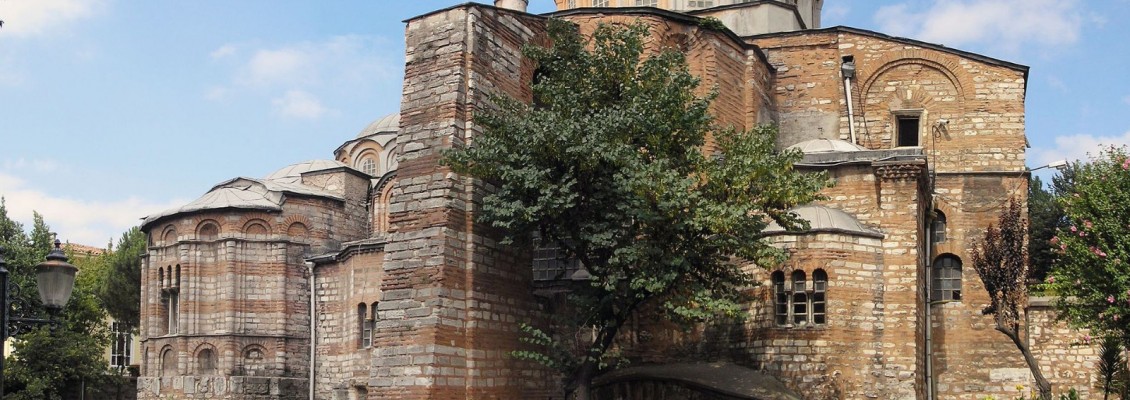
ROMAN TRACES IN ISTANBUL-3
Stoudios
Monastery
The Stoudios Monastery Church is the oldest surviving
structure from the Byzantine period. It was built in 462 by a Roman aristocrat
living in Constantinople. Located very close to the Golden Gate, which was the
city’s most important gate, this church’s elegant architecture carries traces
of this ancient period.
Famous for its columns, mosaics and geometric
ornaments in the Corinthian order, the church was essentially a monastery
dedicated to John the Baptist. Of the eighty monasteries in Constantinople,
this was the most influential. The abbots were the clergy with the most power
after the bishop of the city. The political influence of Studios Abbey was felt
most strongly in the 700s, when it stood against the iconoclastic movement.
The monastery was converted into a mosque by the
Ottomans in 1486, known as Imrahor Mosque. In a way it maintained the monastic
tradition with the addition of a tekke (a
venue akin to a sufi monastery).

Chora
Church
The Chora Church was a monastery outside the city
walls of the Constantine period. When the walls were expanded during the reign
of Theodosius II, the church became part of the city.
Precise historical findings about this ancient
monastery coincide with the period of the Komnenian Dynasty. The present
monastery church was built between 1077 and 1081 by Maria Dukiana,
mother-in-law of Alexios I Komnenos.
Byzantine chief treasurer Thedoros Metochites was the
one who decorated the building with the mosaics that it would later be famous
for. Thedoros had the main dome of the church rebuilt between 1315 and 1320. He
added a funerary chapel called the Parekklesion, as in Pammakaristos. Finally,
he added a mosaic series narrating the lives of Jesus and Mary.
Among all the Byzantine churches in Istanbul, Chora is
the one that best reflects Byzantine art. It houses the most beautiful mosaics
inherited from the Byzantine period. After functioning as a mosque for a while
during the Ottoman period, the former church was converted into a museum in the
Republican period, known as the Kariye Museum. In 2020, the Kariye Museum was
turned into a mosque again.

Church
of St. Theodosia / Rose(Gül) Mosque
When the Ottoman soldiers entered the city after the
conquest of İstanbul, they found the St. Theodosia Church decorated with roses.
For this reason, when the St. Theodosia Church was converted into a mosque
during the Ottoman period, it was named the Gül (Rose) Mosque.
Although the church’s exact construction date is
unknown, it is estimated that it was built at the end of the 11th century.
According to some historians, it was built by Ioannes Komnenos, the nephew of
Emperor Alexios I.
The church has a cross-in-square structure with a flat
dome. The wall decorations, which were renewed during the Ottoman period,
feature the Star of David.
Tekfur
Palace (Blaherna)
The initial construction of Blaherna, which was the
palace where the Byzantine emperors lived after the Latin Empire period of the
Crusaders between 1204–1261, dates back to the 6th century. Tekfur Palace,
which is the only part of Blaherna that remains today, is also referred to as
the Palace of Constantine Porphyrogenitus, because of the emperor who had it built.
The building, which is currently undergoing intensive restoration, was used as
a tile production centre during the Ottoman period.
The
Little Hagia Sophia
The construction of the Church of Sergios and Bakhos
began in 527 and was completed in 536, in response to a challenge by Anicia
Juliana, who had the Church of Agios Polieuktos built.
Justinian became first consul and then Caesar during
the empire of his uncle Justin. He was the secret power behind his illiterate
uncle.
Justinian and his wife Theodora, who used to live in
the Hormisdas Palace, built a church here dedicated to St. Peter and St. Paul.
However, after Justinian became emperor, it was converted into a monastery
together with the church inside the Palace of Hormisdas.
Opposite the church of Anicia Juliana dedicated to St.
Polyeuktos, the construction of a church was initiated, dedicated to the
soldier saints Sergius and Bacchus, who were Christian martyrs.
The Church of Sergios and Bachos, built in response to
the arrogance of the aristocracy, was the first structure to abandon the
Basilica plan with its octagonal dome inside a square structure.
This church, which was converted into a mosque by the
Ottomans in 1509, is similar to Hagia Sophia, which was, in turn, a
groundbreaking achievement in the history of architecture; it was named Little
Hagia Sophia Mosque.


Leave a Comment